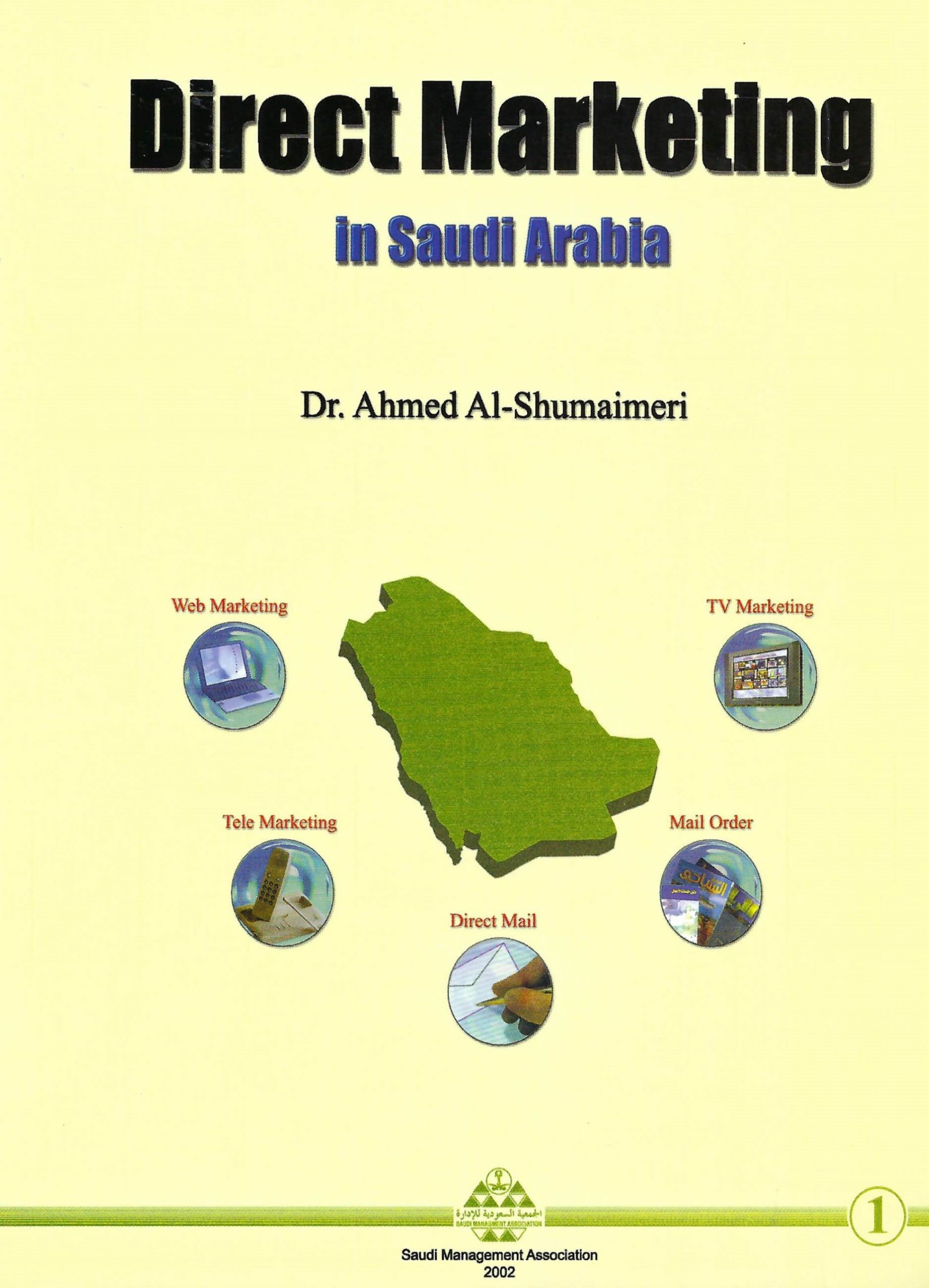Direct Marketing
أماكن بيع الكتاب
يمكن الحصول على الكتاب من :
مكتبة العبيكان
الرياض – هاتف 4654424- 4160018 فاكس 4650129
جمعية ريادة الأعمال
@enas1431
https://www.facebook.com/enas1431
enas.org
xDr. Ahmed Al-Shumaimri
الإدارةريادة الاعمال
تاريخ النشر: 01/01/2002عدد الصفحات: 122 الناشر: مكتبة العبيكان
In response to this pressure, direct marketing is growing rapidly, and is considered one of the fastest growing marketing approaches during the last two decades. In the UK for example, direct marketing expenditure increased by 100% between 1990 and 1999. One form of direct marketing, direct mail itself accounted for 90% of companies’ external expenditure on marketing directly to individual households or trade clients in the UK (Key Note Report 1995). Similarly, in the US, the overall media spending for direct marketing reached $191.6 billion in 2000. Direct marketing advertising expenditures now represent more than half ( 56%) of total US advertising expenditures. In Japan Catalogue sales reached $24 billion in 1996, and growth was estimated to be 10% each year.
Although this growing appeal is witnessed in several developed countries, direct marketing in the developing countries such as the Gulf States (Saudi Arabia, United Arab Emirates, Kuwait, Qatar, Oman, and Bahrain) is still in its infancy. In Saudi Arabia, official statistics for direct marketing are still not available, and up to 2002 there were fewer than 10 agencies in the whole country classified as direct mail services agencies. Mail order and catalogue businesses are also scarce. Most of the existing mail order companies are branches or agencies of major international companies such as Freeman’s, Quelle, MotherCare, JC Penney, Avon, Next, and Great Universal. Banks and financial services are the primary users of direct mail. According to the chief executive of the Post Office in Saudi Arabia, banks account for more than 40% of the total business-to-business direct mail. The remaining users are companies involved in retailing, health services, hotels, and travel services. There is a growing need to attract the attention of marketers as well as researchers to the significance of using the approach.
The objective of publishing this book is to provide a profile of the supply side of direct marketing in Saudi Arabia. It will present a descriptive analysis of the practice of direct marketing, its purposes, incentives, and the barriers to using the technique. Unlike the situation in Western countries, where a considerable amount of research work has been conducted on both the supply and demand side of direct marketing, to the best of the author knowledge, no research about direct marketing has been carried out in Saudi Arabia. Therefore, such a descriptive profile is expected to provide insights, and has implications to improve the understanding of direct marketing in Saudi Arabia in particular and the Gulf States that have similar characteristics in general. And finally, it will provide researchers as well as practitioners with general views and useful information about the characteristics of direct marketing.
This book is divided into five chapters. The first chapter provides a brief presentation of direct marketing’s history, and reasons for its growth. Also, it provides a clarification of the conceptual meaning of direct marketing, as well as a brief discussion of its definition among academics and practitioners. The second chapter presents a brief explanation of the elements of direct marketing. Also, in this chapter, the relationships between direct marketing and other marketing approaches are explained, and the characteristic differences among these approaches are distinguished. The third chapter highlights the strategic role of direct marketing along with a discussion of its advantages and disadvantages. The chapter concludes by explaining that although direct marketing has been used commonly as a promotional tool, it is extensively used as a distribution channel. The fourth chapter presents a brief background about Saudi Arabia’s market. It presents a detailed description of channel structure in Saudi Arabia and some of the major determinants of marketing strategy including population, income, and culture. Furthermore, this chapter throws some light on the marketing mix in Saudi Arabia and the physical infrastructure related to direct marketing. In the fifth chapter, the results of the author’s empirical research into the status of direct marketing in Saudi Arabia will be discussed and the major findings will be highlighted. It discusses the significant findings regarding the purposes, incentives, and barriers to using the approach. Lastly, it explains the possible implications of these findings, and provides a number of managerial implications and remarks.
Summary
The final results imply that direct marketing in Saudi Arabia is still in its early stage of development. Use of the approach to target individual customers is still at a minimal level. Most businesses in Saudi Arabia utilise direct marketing for business-to-business contacts. Unlike the situation in the Western countries, direct mail is still not the dominant element of direct marketing, the most important elements in Saudi Arabia being the facsimile and telephone. An obvious reason for this result is the ineffective and insufficient mail system in the country. Despite issues related to the mail system, purposes, incentives, and barriers of direct marketing appeared to be similar to those found in studies conducted in the Western environment.
Final words
This study is the first of direct marketing in Saudi Arabia. As such it has looked at issues very broadly. However, it has led to a series of managerial recommendations for using direct marketing in Saudi Arabia, and set out research directions in further improvements for the future research. It is believed to represent at least a small step forward in a largely unexplored area, direct marketing in the Arab World. It is hoped that this book increases the attention of both academician and practitioners to this area, and provides a clear map to chart future inquiry.

